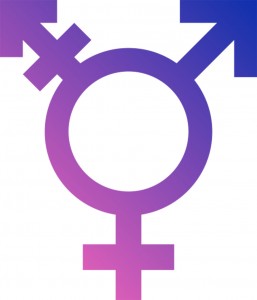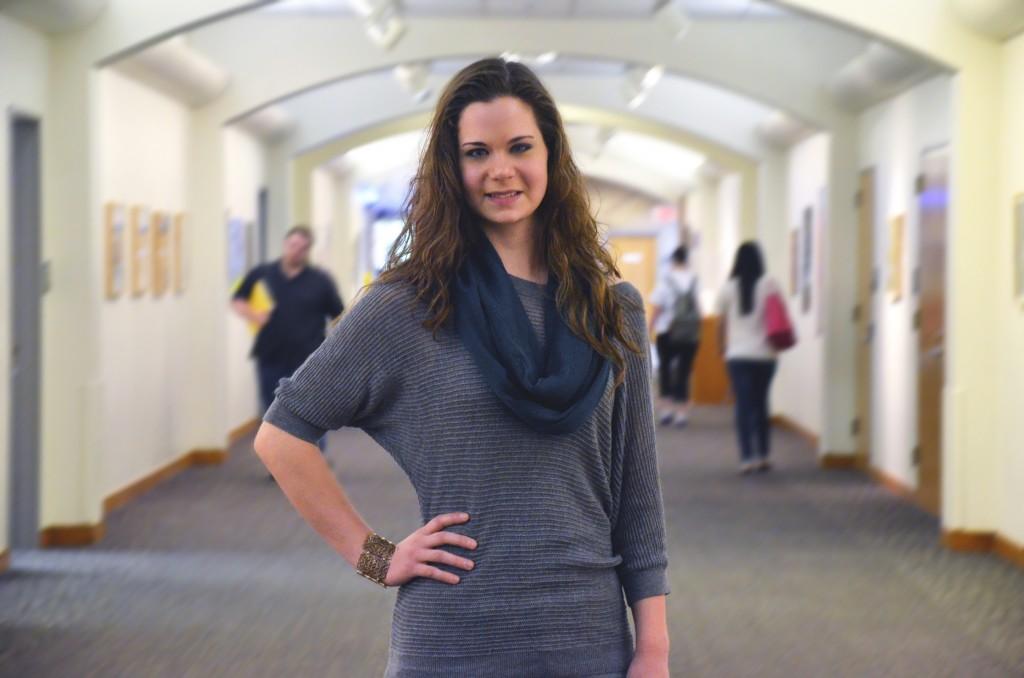Michelle Stafford, Laura Kiewicz, Chrystal Teague and Rachel Carr are all adult females with one thing in common — at one point in their lives, they lived and functioned as males.
On April 11, the South Campus Diversity and Inclusion Council and the gay-straight alliance organization Spectrum co-sponsored Outside My Own Skin: What It Really Means to be Transgender, a panel meant to bring awareness to South Campus about the transgender community.
Along with those four — who are all male-to-female transgender individuals — Rashad Nicholas, a female-to-male transgender, spoke to students about the labels that exist in society and the reality of being a transgender individual in today’s world.
South psychology assistant professor and Spectrum faculty advisor Ticily Medley challenged the panelists to examine society’s labels and categories and explain what label they prefer and why.
Teague, who started transitioning five years ago, labels herself as a heterosexual woman who happens to be transgender. Before beginning her transition, she had female internal organs but externally was a male and was raised as a male by her parents. After two decades of performing as a drag queen and considering suicide, Teague said her choice became clear.
“I had to either do something or cease to exist, and ceasing to exist was not an option,” she said. “I chose the label heterosexual female because that is how I feel inside. When I transition, I identify fully as a female, and I am only attracted to men.”
Carr spent 50 years putting up what she calls a stone wall, hiding the female that she always knew was there. Now, 10 years after acknowledging that she could no longer hide “Rachel,” Carr identifies herself as a trans-woman, which she explains as “a woman, who at one point in the past used to live as a guy.” Carr also knows she has loved women all her life, and even as a woman, that continues to be true, so she also acknowledges that she now has to say she is a lesbian.
Kiewicz, a Veterans Affairs nurse educator, had a simple view.
“I just feel like I’m a woman in the mirror and in my heart,” she said. “Sometimes I use trans-woman, but I am just a woman. What matters is what you see yourself as. What others call you is up to them.”
Stafford, a bi-gender former pastor, doesn’t think twice about labels.
“The first label that I want to use is that I am a Christian. The second is that I am a Texan. Outside of that, call me anything you want,” she said. “I just want to be authentic. Me.”
Stafford is not just a male-to-female transgender and does not identify with simply one gender.
“I am married. She still wants her husband, and we are very much in love,” Stafford said about her wife. “I present as male sometimes too, and depending on the week, it is honestly 50/50.”
Speaking as Michelle, Stafford proclaims that her sexual identity is to her wife only and that sometimes her wife wants and needs her husband, so that is what Stafford presents as.
“Gender is up here — between the ears, and sexual orientation is down here — between the legs,” Stafford said.
Nicholas, the only female-to-male transgender present, said that after thinking about the question “Where is my heart?” he realized that his heart was toward females. He admits he is still sexually attracted to males, but emotionally, he is only attracted to women.
“Sometimes, I think I am bisexual, but I only love women, so I have come to consider myself a transgender female-to-male, not heterosexual or homosexual, just transgender,” Nicholas said.
Teague admits although she can adopt all the labels she wants, she cannot control everyone’s perceptions. All five transgender speakers agreed that beyond labels, all they want is to live and work like anyone else, enjoying life without having to fear for their safety.
“What Kermit the Frog sings is true: ‘It ain’t easy being green,’” Kiewicz said. “But that’s who he is. This is who we are, and we live with it.”


























